The 2021 Electric Volkswagen ID.4 Pro S Review: An EV for the Masses
【Summary】The Volkswagen ID.4 may be the automaker’s first real attempt at an electric vehicle, but it might be its best product currently on sale and it matches the needs of nearly every EV shopper on the market.
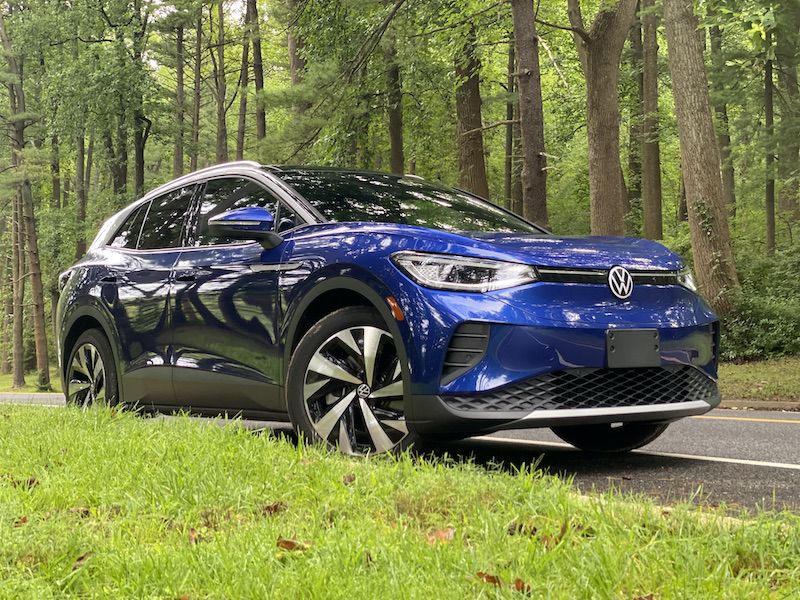
Automaker Volkswagen introduced the electric e-Golf back in 2015. The recipe for the e-Golf was simple. Volkswagen took the already popular Golf hatchback and stuffed an electric powertrain into the vehicle. The result was an electric motor with 115 horsepower and a 24.2-kWh lithium-ion battery pack that was good for 83 miles of range. Back then, the e-Golf was a competitive EV. Nowadays, the original e-Golf looks like a bad joke.
Times have changed though. Electric vehicles are gaining traction and nearly every automaker is looking toward an electrified future. Now, you'll find good all-electric options on the market from Kia, Hyundai, Chevrolet, Tesla, Ford, Audi, and Volvo.
Pick an automaker, and chances are that they're working on some kind of new electric vehicle. This may come as a surprise, but Volkswagen actually has one of the best electric cars on sale with its ID.4 SUV.
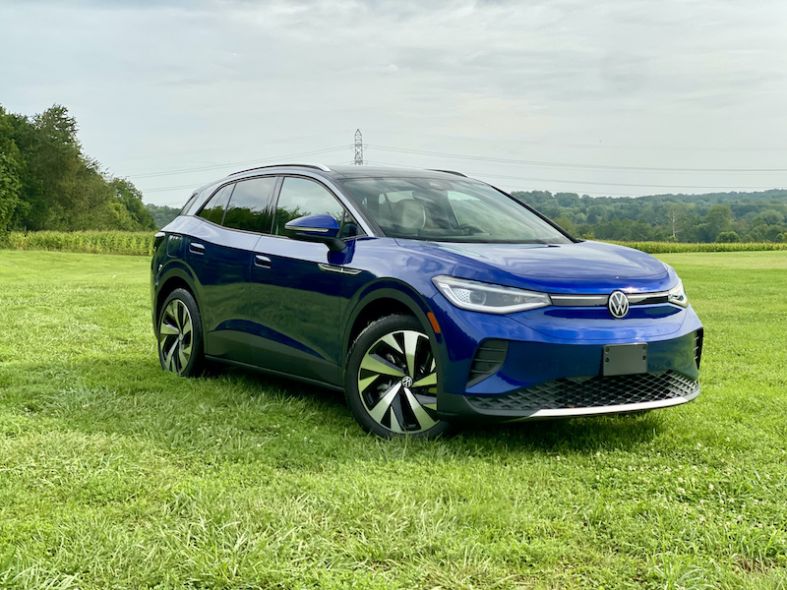
What Happened To The ID. Crozz?
Because of the dieselgate scandal, VW, an enormous automaker that carries Porsche, Audi, Lamborghini, Ducati, and Bugatti under its umbrella, is focusing on electric cars.
The ID.4 plays an important role in VW's future. It's the first U.S.-bound electric vehicle that's built from the onset with electrification in mind. Before it was called the ID.4, the EV was known as the ID. Crozz concept.
In keeping with Volkswagen's transition from being an automaker that gvies the green light on insane concept cars, the ID.4 is a toned down version of the ID. Crozz concept for real life. While that sounds like a bad thing, the ID.4 is a better EV for it.
Unlike other automakers that are merely wading into the EV pool, Volkswagen is going all-in from the get-go. So, the company has a lot riding on the ID.4. While some consumers will look at the ID.4 and wish it had more — more performance, more range and more high-tech features. But the ID.4 is an electric vehicle that's intended to appeal to everyone. In that respect, it does just that and does it well.
Volkswagen lent us an ID.4 Pro S trim with the Gradient package. Until later this year, all ID.4s sold will come with rear-wheel drive, just like our test vehicle. Every ID.4 comes with an 82-kWh battery pack and a single electric motor.
The motor produces 201 horsepower and 229 pound-feet of torque, while the battery pack is responsible for a range of 250 miles. While 250 miles is below vehicles like the Tesla Model Y, Mustang Mach-E, Hyundai Kona EV, and Chevy Bolt EV, when VW says 250 miles of rang with the ID.4, it's actually true, at least in the warm tempertures of summer.
The ID.4 can be charged using multiple methods, but with an EV that has this much range, you're going to need to upgrade to a Level 2 charger at your house. When plugged into a regular wall outlet, the ID.4 needs roughly 10 hours to get back 90% of its charge. That's horrific. When plugged into a standard Level 2 charger, you're looking at waiting about 7.5 hours to get a full charge.
Therefore the only realistic method to charge the ID.4 is by plugging into a DC fast charger. This can charge the battery from 5% to 80% in roughly 38 minutes.
We used a DC fast charger installed at a local library and found it to be the best charging option. One benefit to purchasing an ID.4 is that you get three years of free unlimited DC fast charging from Electrify America, so there are plenty of free options to charge.
In our week spent with the ID.4, we completed long trips on the highway as well as trips around town. Regardless of whether we had the air conditioning set on max or the massaging seats on, the ID.4 managed to stick to its EPA range rating to the letter. That alone is an impressive statistic.
With other EVs, you have to worry about every little detail. Setting the air conditioning too high, driving too far above the speed limit, and pushing the throttle too aggressively can drain range rather quickly. However, that's not the case with the VW ID.4. We kept it in "Eco mode" for the most part and found this setting has more to do with the ID.4's performance rather than its overall range.
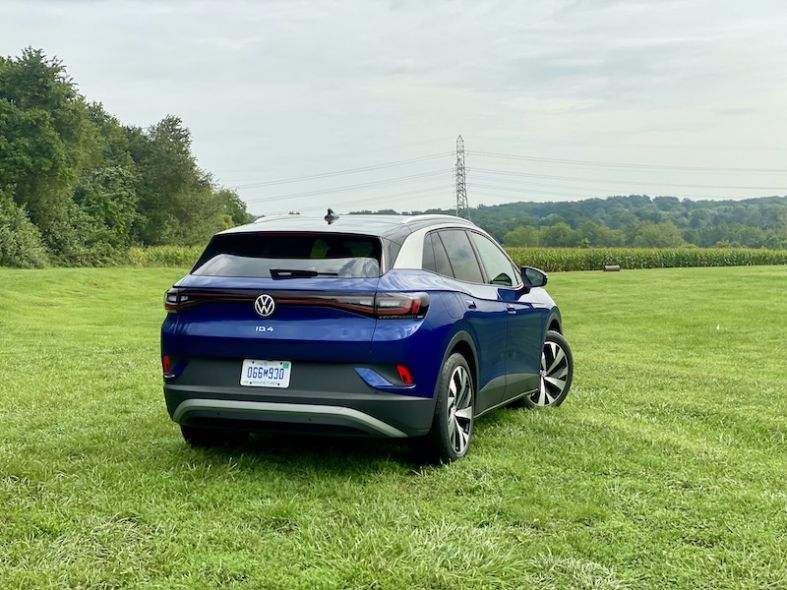
Performance Takes A Backseat
While competitors like the Model Y and Mustang Mach-E have serious performance chops, the ID.4 is more about efficiency. As much as zero-to-60 mph times don't matter in the real world, the ID.4 can complete the sprint in 7.5 seconds.
That's not as quick as the Tesla Model Y or Ford's Mach-E, which can do the same run in just 3.5 seconds. Still, the ID.4 feels plenty quick for regular use. Just don't expect to race supercars in a straight line.
The ID.4's straight-line performance sums up how you'll want to drive the EV. It's peppy off the line and on urban roads, but lacks that oomph to really push drivers to want to do multiple quarter-mile runs or carve up a canyon road. Instead, this is the kind of EV that you'll want to relax in, commute in, run regular errands in. It delivers a comfortable, near luxurious ride with an incredibly tight turning circle. For better or worse, it's like a regular SUV. Just one that happens to have an electric powertrain.
Twisting the drive selector to "B" engages a higher setting of regenerative braking. While it can be used for one-pedal driving, it's not quite as strong as systems found on other EVs. The vehicle never came to a complete stop and continued to coast along at 2 mph. The regeneration isn't that strong either, as we used "B" when driving on the highway.
The "regular car" ideology that VW was going for with the ID.4 carries into the cabin. The ID.4 looks nothing like the ID. Crozz concept on the inside. That's not to say the cabin isn't nice — it is. It just lacks the pizzazz that every consumer has come to expect from an electric car because Tesla set the bar high. There are some unique features though, like the petite gauge cluster that moves with the steering wheel and a gear shifter that you simply twist. It's located on the gauge cluster too.
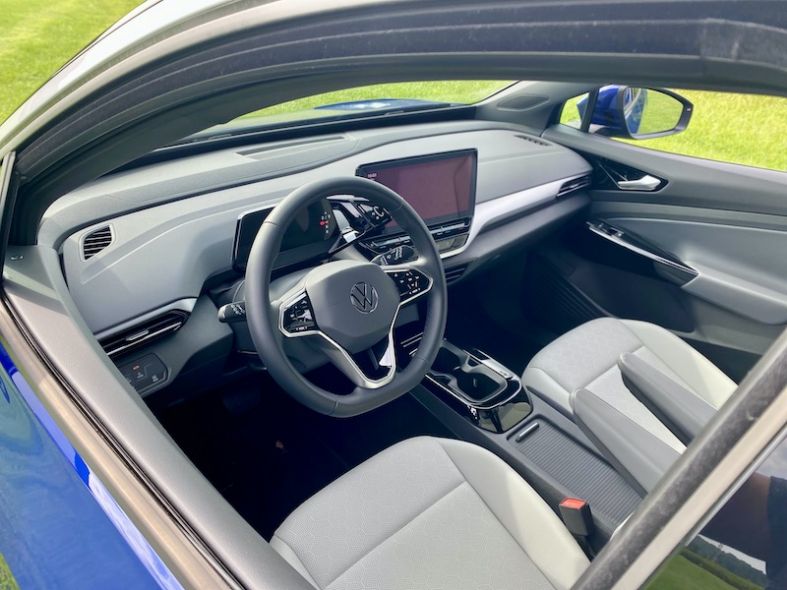
Smartphone Inspired Tech
The infotainment system in the ID.4 Pro S trim includes a 12-inch touchscreen, wireless Apple CarPlay, Android Auto, a wireless smartphone charger, Wi-Fi hot spot, and navigation. It's clear to see that VW used smartphones as the basis for the ID.4's infotainment system, because there's an iOS feel to the whole thing.
Menus are simplified, graphics are crisp, and there's a convenient home button to get back to the main screen. Some things are harder to access than others, like finding satellite radio stations, but owners don't have to read the entire owner's manual to get to grips with the system or relearn everything.
As one would expect, the infotainment system can help you find the closest EV charging station and save it for next time. It also has multiple menus for information on range and fuel economy. These are easy to read and informative. There were times, though, when the car said that it had crazy range figures, like 280 miles, which made no sense.
The main issue with the infotainment system is that it has horrible lag. The touchscreen refused to respond to inputs and after charging a few times, the screen remained black until we pulled over and restarted the ID.4. Other times, the system refused to start up at the same time as the car. It took a few minutes to become available, which is a hassle if you're in a rush.

Outrageously Good For All
Uncluttered and contemporary, the ID.4 trades flash for comfort. The EV's seats are comfortable and despite the sloping roofline, the ID.4 has plenty of room for five passengers. The major downside when it comes to space is the tight cargo capacity.
To match the contemporary design, the ID.4 ditches traditional buttons and dials for touch-sensitive ones. Even the controls for the panoramic roof are touch-sensitive. For the most part, they work well, but can be annoying to get used to. They're certainly not better than normal buttons.
The test ID.4 we drove costs $47,190. At that price, you're in the same realm as the Tesla Model Y, Mustang Mach-E, and Bolt EUV. Compared to those vehicles, the ID.4 feels unimaginative and uninspired. It lacks charm, tech and performance of those models. While some may see that as a negative thing, it doesn't have to be.
Not every consumer wants a vehicle with cutting-edge tech features or performance that makes you nauseous. Once the allure of EVs wears off, more cars will feel like the ID.4 — and like they've been on sale for years.
Ignoring the Golf GTI and Golf R, the ID.4 feels like one of the best products that Volkswagen sells. It feels more futuristic than other VW models like the Tiguan, Atlas, Atlas Cross Sport, Arteon, and Passat, while still having a more enjoyable character.
For the basis of VW's EV-heavy future, the ID.4 is a great base to build upon. If anything, it gets us excited for the future electric cars from the brand.
For consumers looking for the EV future in an easy-to-digest package, the 2021 ID.4 certainly fits the bill.
-

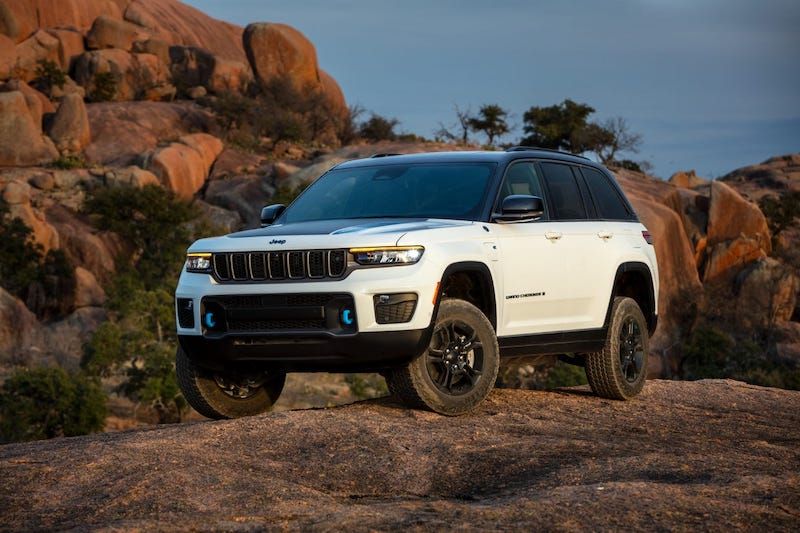
2023 Jeep Grand Cherokee Trailhawk Now PHEV Only
-

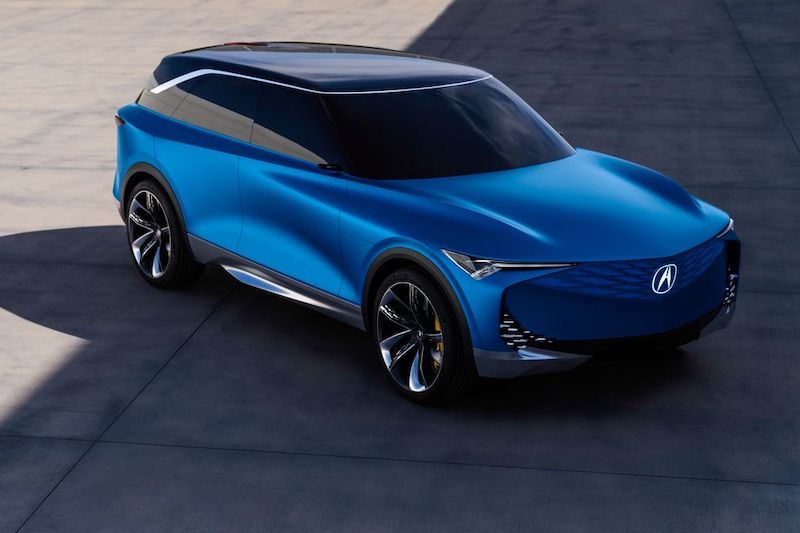
Acura Prevision EV Concept Previews Brand’s Electric Future
-

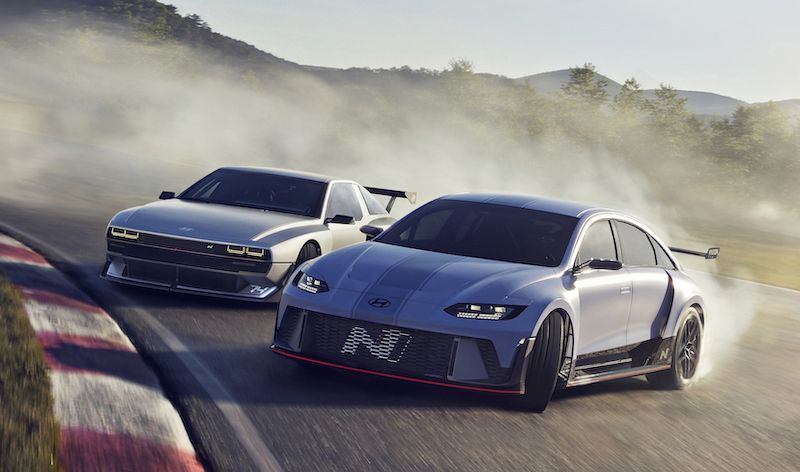
Hyundai Gets Serious About Electric Performance Cars, Shows off Two Concepts
-


Ford Looks to Have 100% of EV Sales Be Online
-

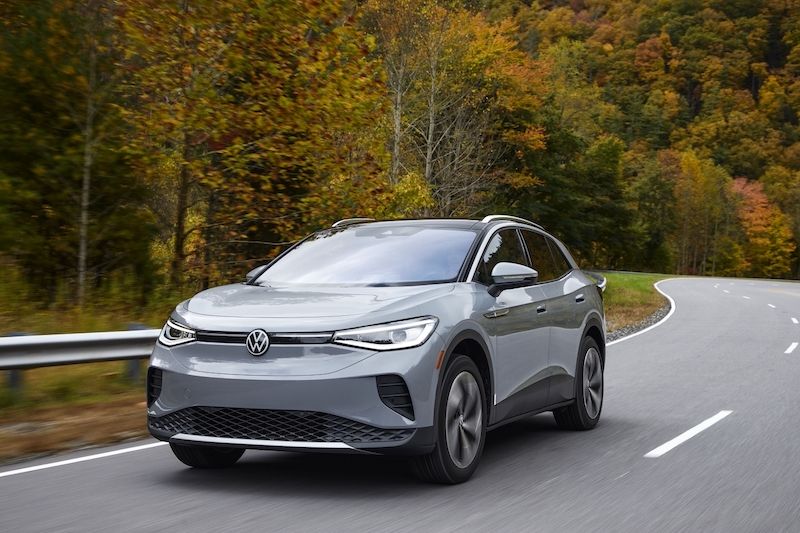
Volkswagen CEO Believes It Will Overtake Tesla in EV Sales by 2025
-

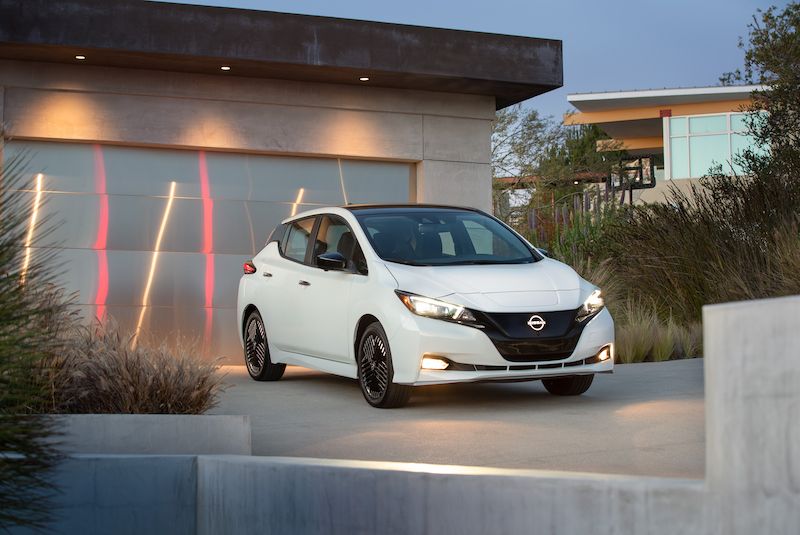
Report Claims Nissan Leaf Will Be Discontinued by 2025
-


Autonomous Vehicles Will Require Cities to Change Their Transportation Methods
-


Rivian, Mercedes-Benz Partner to Produce Electric Commercial Vans
- Ford Announces the Largest Utility Agreement in the U.S. History to Assemble All of its Vehicles in Michigan Using 100% Renewable Energy by 2025
- Intel’s Self-Driving Car Unit Mobileye Postpones its Planned U.S. IPO That Could Value the Company up to $50 Billion
- General Motors Launches ‘EV Live’ an Interactive Virtual Experience Where Participants Can Learn More About Electric Vehicles
- Hyundai Unveils the IONIQ 6 ‘Electric Streamliner’, its Bold Sedan With a 380-Mile Range and 18-Minute Charging Time
- China’s CATL to Supply Honda with 123 GWh of Electric Vehicle Batteries by 2030
- Ford Raises the Prices of the F-150 Lightning Electric Pickup Due to Rising Raw Material Costs
- Mercedes-Benz is Partnering with Game Engine Developer Unity Technologies to Create Immersive, 3D Infotainment Screens and Displays for its Future Vehicles
- Volkswagen’s Software Unit CARIAD to Co-Develop a System-on-Chip With STMicroelectronics for the Automaker’s Future Software-defined Vehicles
- AI-Powered Computer Vision Perception Developer StradVision Closes on $88 Million Series C Funding Round
- China’s Baidu Reveals the Apollo RT6, a Fully Autonomous, Production Ready Level-4 Robotaxi with Removable Steering Wheel











 About Us
About Us Contact Us
Contact Us Careers
Careers